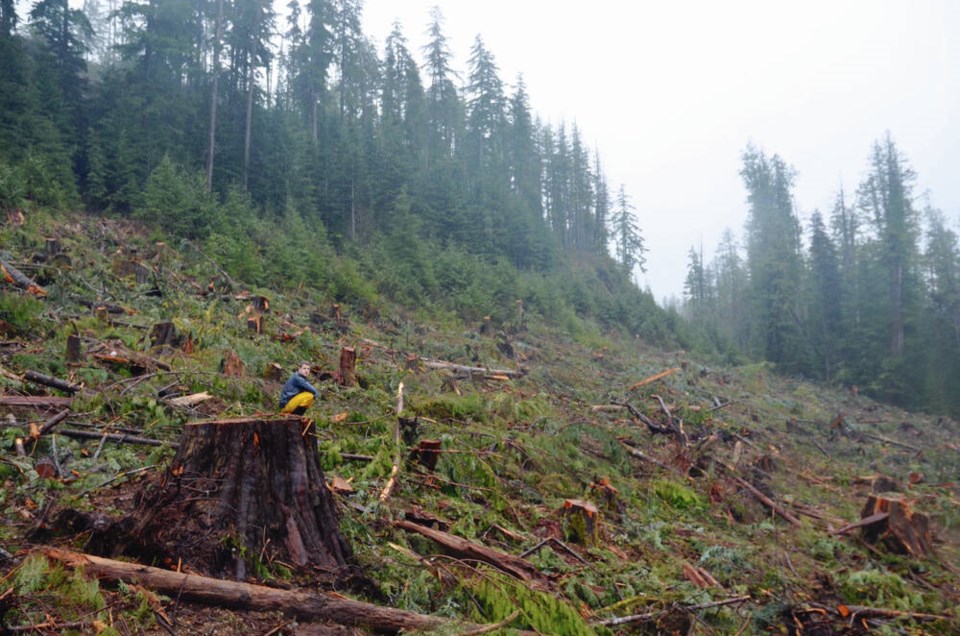In this series of columns, I am exploring the UN’s call for humanity to make peace with nature. Last week, I noted that B.C.’s government is failing to act, or is taking inadequate action, on climate change.
This week, I look at B.C.’s continuing war on nature, focusing on the second of three global ecological crises noted in the UN report — biodiversity loss. But I also look at its failure to address the wider economic, social and other transformations needed if we are to make peace with nature.
In a May 2021 biodiversity report card, Ecojustice and the Wilderness Committee described B.C. as “a ‘poster child’ for the biodiversity crisis — it has the richest biodiversity in Canada, but also the highest number of species at risk.”
In fact, the B.C. government’s 2021 update to its Red and Blue List found 782 ecological communities, native species and subspecies in B.C. are at the greatest risk of being lost (Red List) and a further 1,141 on the Blue List that are “of special concern” (vulnerable).
Yet the government reneged on Premier John Horgan’s 2017 commitment to bring in a Species At Risk Act. As a result, B.C. is “one of the few remaining provinces without a stand-alone law to protect at-risk species and the habitat they need to survive and recover,” the biodiversity report card notes. This was one of the four out of five areas considered in the report where B.C. earned an “F” grade.
And then, of course, we have the B.C. government’s failure to implement the recommendations of the Old Growth Strategic Review and put in place a moratorium on the cutting of the tiny fraction — about three per cent, according to a May 2021 report from three independent forest-management experts — of the high-quality old-growth big-tree forests in B.C.
Also in May, the Wilderness Committee released a report based on publicly available data showing a 43 per cent increase in cutblock approvals in the year following the government’s receipt of the Old Growth Strategic Review. Moreover, “eighty per cent of this logging was concentrated in the medium and higher productivity forests.”
In an article on the old-growth issue in The Tyee in June, Michael M’Gonigle — who, among other things, held the eco-research chair in environmental law and policy at the University of Victoria — was blunt: “Horgan’s government of New Democrats shows no will to take up the struggle. It is incredible that, as biodiversity collapses globally and locally, no substantive discussion exists of what a transformation away from [the] inherited political economy might look like.”
The inherited political economy he refers to is rooted in a 19th- and 20th-century worldview, an industrial society and economy that treats nature and people as a resource to be exploited in the pursuit of continued economic growth.
I agree with M’Gonigle that the fundamental problem is that the NDP, like the Liberals and Conservatives to its right, is still rooted in this worldview. From that perspective, what matters is jobs and money — and votes — today, with no sense of long-term responsibility. The only real difference between the parties is about how equitably the spoils and the power are divided.
But the UN Environment Programme is very clear, in its February 2021 report Making Peace with Nature, that “economic and financial systems can and should be transformed.” Specifically, the report suggests ditching GDP, noting that: “Yardsticks such as inclusive wealth (the sum of produced, natural, human and social capital) provide a better basis for investment decisions.”
This is another example of where the NDP could and should have led in the shift to making peace with rather than war on nature — and failed to do so. Its formal agreement with the Green Party in 2017 set up a work group to look at developing an alternative to GDP for B.C., but the whole project seems to have been shunted aside and made to disappear into the bureaucracy — no report has emerged, so no significant changes were required and no old thought patterns were harmed.
Clearly we can’t look to B.C.’s government for action on making peace with nature. So in future columns, I will look at what “making peace with nature” might mean here in the Greater Victoria region.
Dr. Trevor Hancock is a retired professor and senior scholar at the University of Victoria’s School of Public Health and Social Policy.
- - -
To comment on this article, send a letter to the editor: [email protected]



